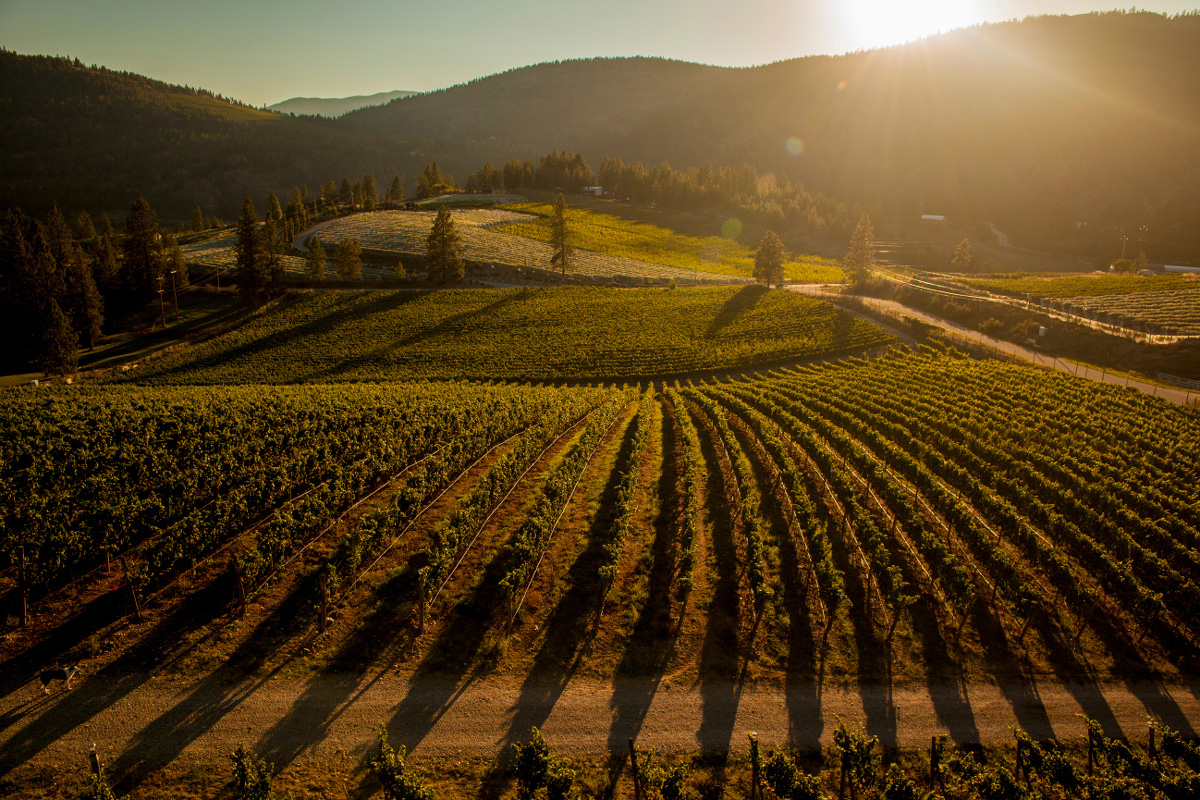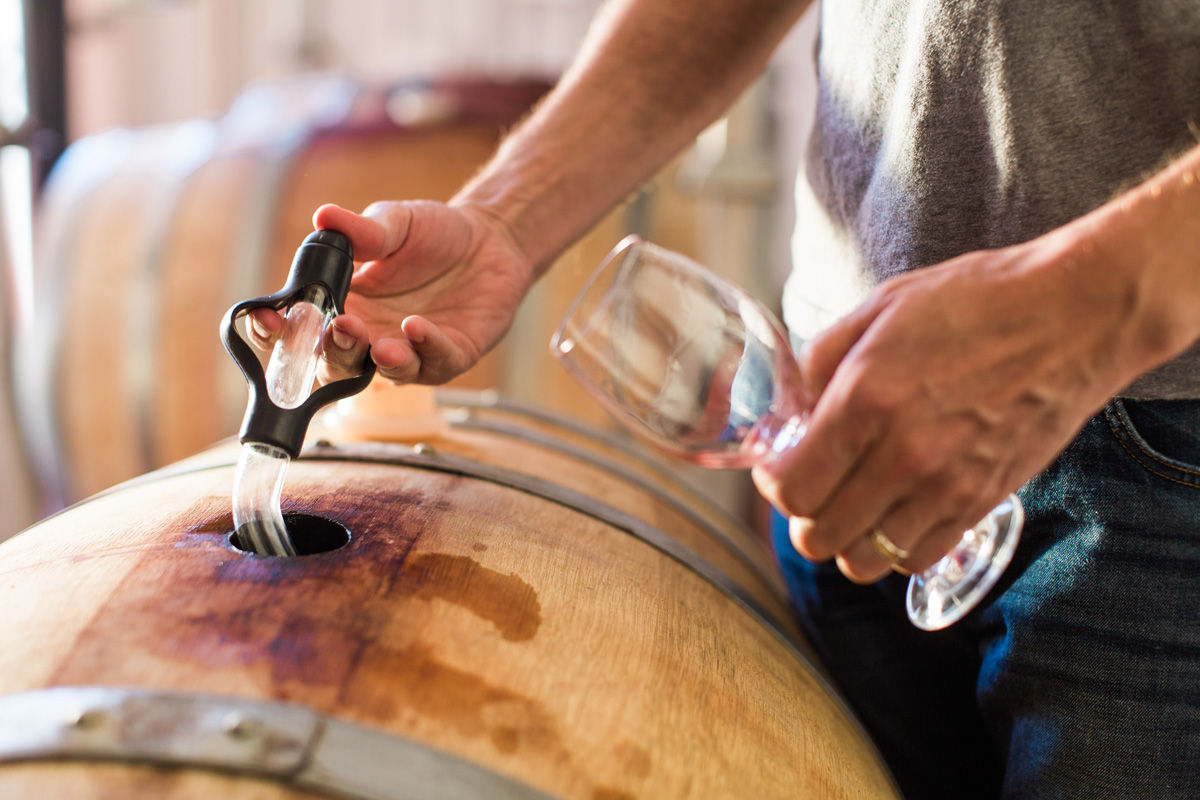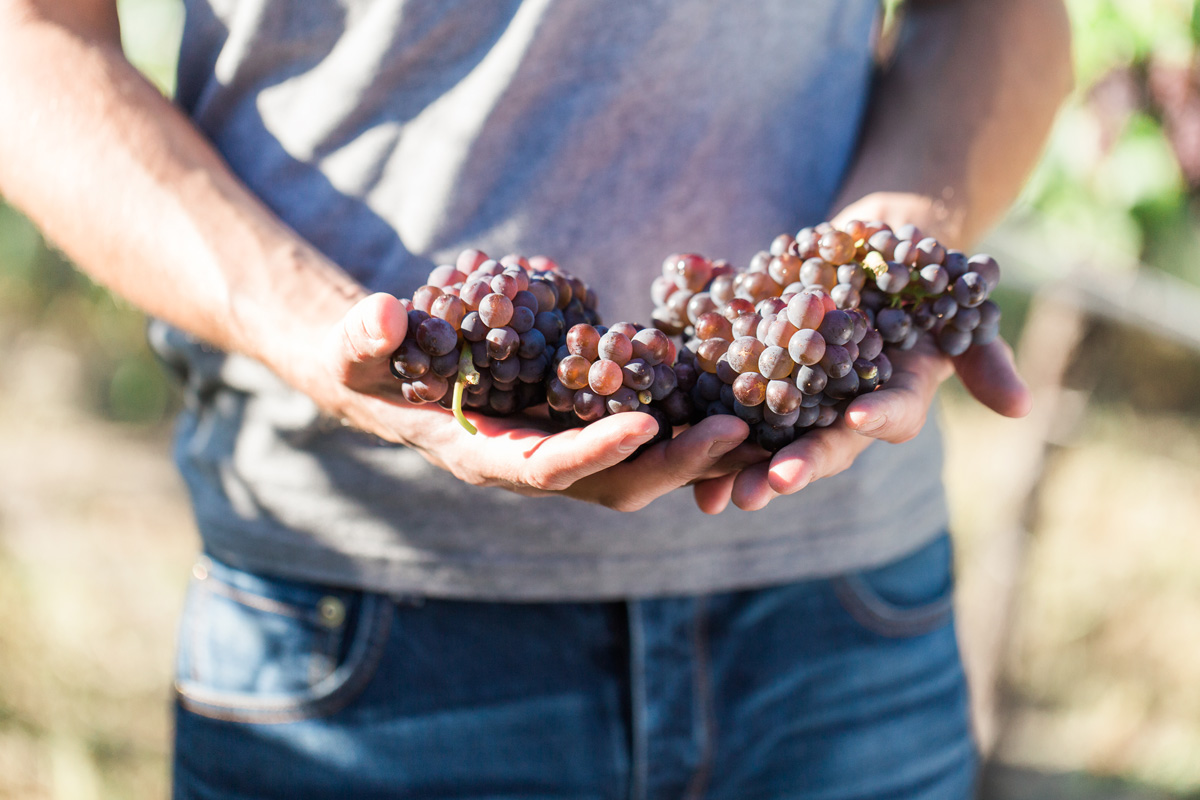
Wine Culture Magazine

Overuse of oak only hides the naturally intense, fruit-driven flavour of Okanagan grapes. Photo courtesy Wines of British Columbia, WineBC.com
This might sound ranty, but it is a source of frequent disappointment. A wine with so much potential—beautiful ripe, intense and aromatic fruit, balanced acidity, freshness and power—yet, as you put the liquid to your lips, filled with anticipation, it comes crashing down on you almost literally like a two-by-four, the wine completely obliterated by overuse of oak. As you pull splinters from your gums, you want to put your head in your hands and cry, weeping for what could have been, a wine that had the potential to be so enjoyable disfigured beyond recognition by a heavy hand in the cellar.
Unfortunately, overuse and misuse of oak is something that still runs rampant in B.C. winemaking. Why does this happen? Surely, the exorbitant cost of oak must stop producers in their tracks to at least consider that less may be more? Surely the pristine, bright and elegant fruit that comes off B.C.’s vineyards must at least hint that the focus should be freshness first, rather than an attempt to emulate some famous, plush and flashy region elsewhere in the world?
It makes sense that a young region, finding its feet, would look to the celebrated corners of the wine world to take direction. B.C. has definitely done that, copying varietal and winemaking trends of famed places like Bordeaux and Napa Valley. Copying, though, should be just a starting point, an initial way to test the water while examining what is the best foot forward for what Mother Nature naturally instills in a region’s vineyards. The time has come to stop copying.
With the pristine, bright and fresh grapes that the B.C. climate offers, less is definitely proving to be more when it comes to winemaking.
Relying on oak comes from a time when winemakers rarely left the cellar, when they felt the need to put their stamp of someone-ness not somewhere-ness on a wine. Excessive oak often went hand in hand with over-ripeness and over-extraction. Now, savvy winemakers are more likely to be found in the vineyard because they know that wine quality stems from the vines, not from a splurge from the barrel catalog. With the pristine, bright and fresh grapes that the B.C. climate offers, less is definitely proving to be more when it comes to winemaking.

B.C.’s vineyards should express their unique terroir, writes Rhys Pender, not obliterate it with oak. Courtesy Wines of British Columbia, WineBC.com
B.C. is gifted with its climate. The bright sunshine and long days of the interior vineyards give amazingly intense fruit-driven wine; the low humidity and rainfall keeps fruit clean and disease-free; and the chilly nights preserve vibrant acidity. These are the stars of the vineyard show, a combination of elements that no other region in the world achieves so naturally and so easily. So, shouldn’t the star of the show have the limelight? Rather than a clumsy, soupy, chocolate-and-vanilla creaminess that devastates the fruit and fights against Mother Nature’s freshness?
Freshness in wine is a global trend as wine drinkers tire of high-alcohol, over-oaked and over-extracted wines. The market for these heavy-handed wines still definitely exists, but it is a fading customer base. Younger, upcoming generations seem to be looking for purity and authenticity, wines that express where they are from. The world is drinking fresher wines.

As B.C. works toward defining its wine style, experts argue that it should come from the vineyard, not the barrel. Courtesy Wines of British Columbia, WineBC.com
Alas, many producers still have their heads in the clouds, choosing to ignore the facts of what is laid out in front of them and lavishing wines with expensive and ambitious oak and then trying to tell the consumer this is what is best. Consumers will often believe it, too, because spending lots on marketing and creating an image can be quite convincing. But is that really where B.C. wine should be heading?
The best B.C. red wines are now full of vibrant fruit, freshness and showing the sage, spice and juicy acidity of the terroir. Oak is just a little seasoning for the dish.
The good news is that more wineries are seeing the light. Producers report slashing the amount of new oak as the lightbulb flashes and they see they have some lovely fresh and elegant wine to work with. The oak is sliding back from the foreground to where it should be, a subtle hint of flavour complexity and texture to support the star of the show. The best B.C. red wines are now full of vibrant fruit, freshness and showing the sage, spice and juicy acidity of the terroir. Oak is just a little seasoning for the dish.
John Skinner, owner of Painted Rock Estate Winery, has reduced the amount of new oak in its red wines from 100 per cent down to just 40 per cent as he has learned to understand the vineyard and which grapes and clones pair best with which barrel. Mike Bartier of Bartier Bros. has removed the oak completely from his Chardonnay as he feels the grape shows its limestone terroir much more effectively without it.
The days of when “too much oak was almost enough” are far behind us. B.C. vineyards are gifted with some wonderful natural qualities that many wine regions of the world would die for. It is time to embrace those gifts, respect the freshness, elegance, brightness and acidity, and to start making brilliant wines. Remember, it is not called the Oak-anagan.

Courtesy Wines of British Columbia, WineBC.com
Bartier Bros. Chardonnay 2018
(Cerqueira Vineyard, Okanagan Valley, $20) Chalk, lemon, lees and racy minerality.
Painted Rock Syrah 2016
(Okanagan Valley, $43) Meat, pepper, blueberry violet and spice.
Clos du Soleil Winemaker’s Estate Cabernet Franc 2016
(Similkameen Valley) Blueberry, graphite, potpourri, juicy and elegant.

Rhys Pender is a Master of Wine who combines his time writing, judging, teaching, consulting and dirtying his boots at his four-acre vineyard and winery, Little Farm Winery, in the Similkameen Valley.

Rhys Pender is a Master of Wine who combines his time writing, judging, teaching, consulting and dirtying his boots at his four-acre vineyard and winery, Little Farm Winery, in the Similkameen Valley.
Copyright © 2025 - All Rights Reserved Vitis Magazine